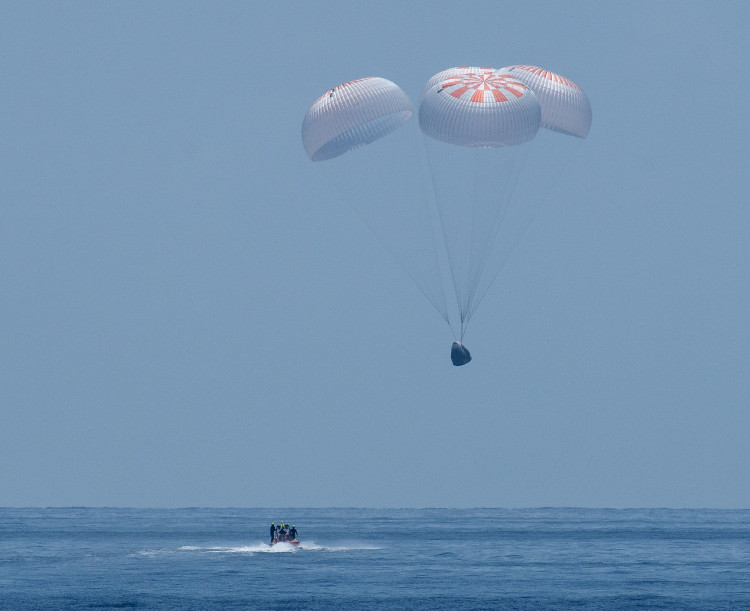SpaceX successfully delivered NASA astronauts to outer space and back.
A Crew Dragon spacecraft carrying NASA astronauts Doug Hurley and Bob Behnken splashed down off the coast of Pensacola Florida on Aug. 2, the conclusion of SpaceX's historic Demo-2 mission to the International Space Station.
"Welcome back to planet Earth," SpaceX's mission control radioed the two astronauts aboard the capsule called Endeavour. "Thanks for flying SpaceX."
Hurley radioed back while still in space, saying, "It was truly our honor and privilege," and that he would never forget the experience. Endevour undocked on Aug. 1 and began its journey home.
Shortly after splashdown, the SpaceX recovery ship GO Navigator met Endeavour and lifted the capsule aboard. Following a series of checkouts, recovery teams opened Endeavour's hatch to extract both Hurley and Behnken. The astronauts will have to go through medical examinations and the medical team should make sure they're in good shape after a two-month stay in space.
A landing in the sea has not been seen for more than 40 years. The last splashdown happened in 1975 when NASA astronauts Deke Slayton, Vance Brand, and Tom Stafford concluded the Apollo-Soyuz Test Project in the middle of the Pacific.
SpaceX's Demo-2 mission started on May 30. A Falcon 9 rocket carried Endeavour from NASA's Kennedy Space Center. It was the first crewed orbital launch to depart from the American soil since the last flight of the space shuttle fleet in 2011.
Upon the retirement of NASA's space shuttle program, it had been reliant on Russian Soyuz spacecraft and rockets to deliver its astronauts to and from the ISS, for a whopping price of approximately $90 million per seat.
Now, SpaceX will be able to provide that service for NASA. The space agency in 2010 started funding the development of homegrown commercial spacecraft. Boeing and SpaceX emerged as winners, each been awarded multibillion-dollar contracts to finish work on their spaceflight systems and fly at least six operational crewed missions to and from the ISS for NASA.
For nearly a decade, SpaceX and Boeing have been neck and neck, building and testing their crew transportation systems. But SpaceX's successful launch in May marked a major milestone for the company, leaving Boeing to play catch up.
Demo-2 has gone very smoothly from start to finish. NASA wants to ensure continued access to the ISS, and is also hoping to save money long-term and enable the commercial space industry by sharing rides aboard the Crew Dragon and Boeing's Starliner with commercial astronauts.






